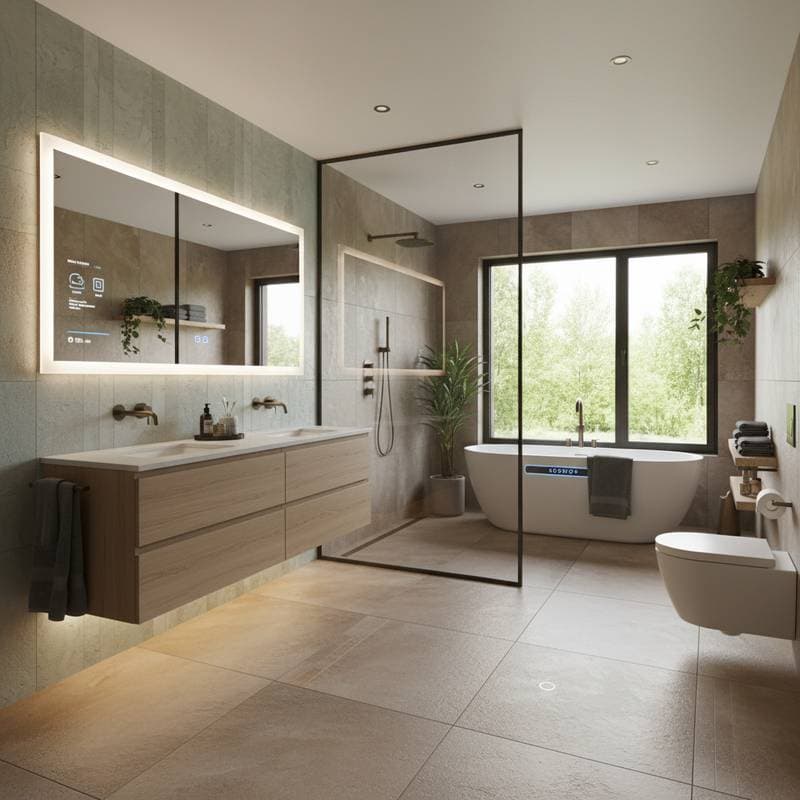Why Bathroom Remodel Costs Are Skyrocketing in 2025
Bathroom remodels rank among the top home improvement choices for enhancing daily comfort, boosting functionality, and elevating property value. However, homeowners increasingly face steeper prices for these upgrades. Nearly every aspect, from materials to labor, contributes to the escalation. Grasping the reasons behind these rises equips you to develop a solid budget and determine which tasks suit your skills versus those requiring expert intervention.
Labor Shortages and Rising Wages
The demand for skilled tradespeople exceeds supply, particularly for plumbers, tile installers, and electricians. Economic shifts prompted many to exit the field, while fewer individuals pursue these careers. Contractors respond by offering competitive wages to secure and retain qualified teams.
This scarcity extends project timelines, with waits of several months common before work commences. Such delays expose projects to fluctuating material costs. To mitigate this, secure contractor commitments early and align them with material procurement. This approach prevents added charges for storage or rescheduling.
Permits, Regulations, and Inspection Expenses
Local governments have tightened building codes to prioritize safety, proper ventilation, and energy conservation. These measures safeguard residents but introduce additional financial burdens.
Permits frequently address plumbing, electrical, and structural modifications as distinct items, each necessitating separate inspections. Corrective actions following inspections demand extra labor and possibly more materials. In numerous areas, energy-efficient lights and low-flow plumbing fixtures form mandatory elements. Although they promise reduced utility expenses over time, the initial investment often exceeds expectations based on prior standards.
The Impact of Design Complexity on Expenses
Bathrooms feature confined areas packed with interconnected systems like plumbing, electrical, and moisture barriers. Altering layouts or incorporating premium elements heightens this intricacy.
Relocating fixtures: Repositioning a toilet or shower involves redirecting drainpipes and ventilation systems. This plumbing endeavor ranks among the priciest components of any renovation.
Advanced shower setups: Elements such as linear drains, dual showerheads, and seamless glass enclosures require exact grading and positioning. Even minor errors risk water leakage, underscoring the need for specialist installation.
Enhanced lighting systems: Combinations of recessed overhead lights, wall-mounted vanity fixtures, and illuminated mirrors enhance practicality yet call for expanded wiring and circuits. Electricians collaborate with tiling and finishing teams to position components accurately.
Each choice demands meticulous coordination among trades, thereby elevating both expenses and duration.
Weighing DIY Options Against Professional Services
Many homeowners consider self-performed tasks to counter escalating costs. Suitability hinges on personal expertise and the renovation's scale.
Suitable for DIY:
- Applying paint to walls and ceilings
- Mounting towel racks, mirrors, or storage units
- Swapping out basic light fixtures
- Constructing and placing ready-made vanities
Reserve for experts:
- All plumbing and electrical modifications
- Laying tiles and applying waterproof barriers
- Fitting showers or bathtubs
- Altering structures or removing walls
Errors in critical areas lead to water damage, safety risks, or regulatory non-compliance, with remediation expenses surpassing initial professional fees. Homeowners attempting waterproofing independently frequently encounter mold problems soon after completion, negating any short-term economies.
Strategies for Efficient Planning and Scheduling
Project timing influences expenses significantly. Peak seasons bring premium rates and extended queues as contractors manage full calendars.
Opt for off-season execution when workforce availability improves. Procure materials in advance and verify shipping timelines prior to starting demolition. This practice eliminates idle periods for teams awaiting components.
Maintain ongoing dialogue with your contractor regarding key phases, from initial teardown to concluding evaluations. Regular updates, such as weekly reviews, identify potential problems early and curb cost overruns.
Selecting Sustainable Options for Long-Term Savings
Elevated initial outlays accompany eco-friendly selections, yet they yield ongoing reductions in operational costs. Low-flow toilets and faucets substantially decrease water consumption.
Opt for resilient surfaces like porcelain tiles or engineered quartz countertops, which withstand stains and degradation superior to budget counterparts. Evaluate choices based on full lifecycle expenses rather than upfront figures alone.
Local programs may provide incentives for installing energy-saving components, helping to balance the investment. Consult contractors or vendors regarding applicable rebates.
Safeguarding Your Investment Through Maintenance
Post-renovation care preserves the upgrade's integrity. Apply fresh sealant to grout lines and caulking each year to block moisture entry.
Document all product guarantees and service provider details for quick reference. Promptly tackle signs of trouble, such as flaking finishes, yielding floors, or sluggish drainage, to avert major complications.
Consistent attention sustains the bathroom's appearance and prolongs component longevity, postponing subsequent overhauls.
Achieving a Successful Remodel
Despite current price surges, bathroom renovations deliver substantial returns on investment. Increases stem from superior materials, advanced innovations, and rigorous safety protocols.
Thorough preparation, multiple quote comparisons, and grounded projections allow creation of appealing, practical spaces within budget constraints. Emphasize judicious designs, streamlined timelines, and robust selections to ensure enduring satisfaction.
Such deliberate efforts transform your vision into a comfortable, reliable sanctuary that meets household demands for years ahead.





